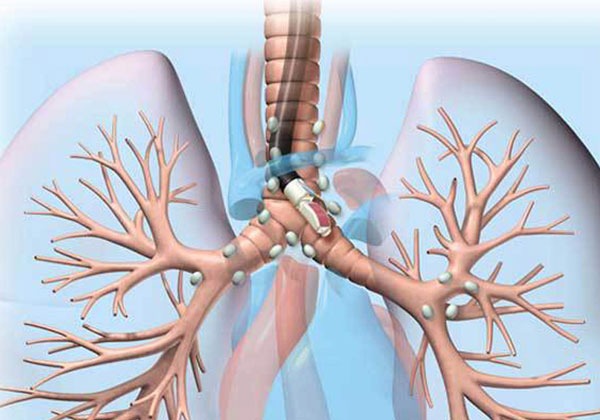Endobronchial Ultrasound (EBUS)
Endobronchial ultrasound (EBUS) is a bronchoscopic technique that uses ultrasound to visualize structures within the airway wall, lung, and mediastinum. EBUS in combination with transbronchial needle aspiration (EBUS-TBNA) is most commonly used as a tool to diagnose, stage, and restage patients with suspected or known non-small cell lung cancer (NSCLC). It can also be used to sample mediastinal lymphadenopathy of unknown etiology, mediastinal masses, pulmonary nodules, and endobronchial or peribronchial lesions, and can guide therapeutic procedures (eg, airway stenting). Use of EBUS may be limited by its availability and training, which is institution and provider dependent.
There are two types of EBUS:
- Radial probe EBUS (RP-EBUS)
- Convex probe EBUS (CP-EBUS)

